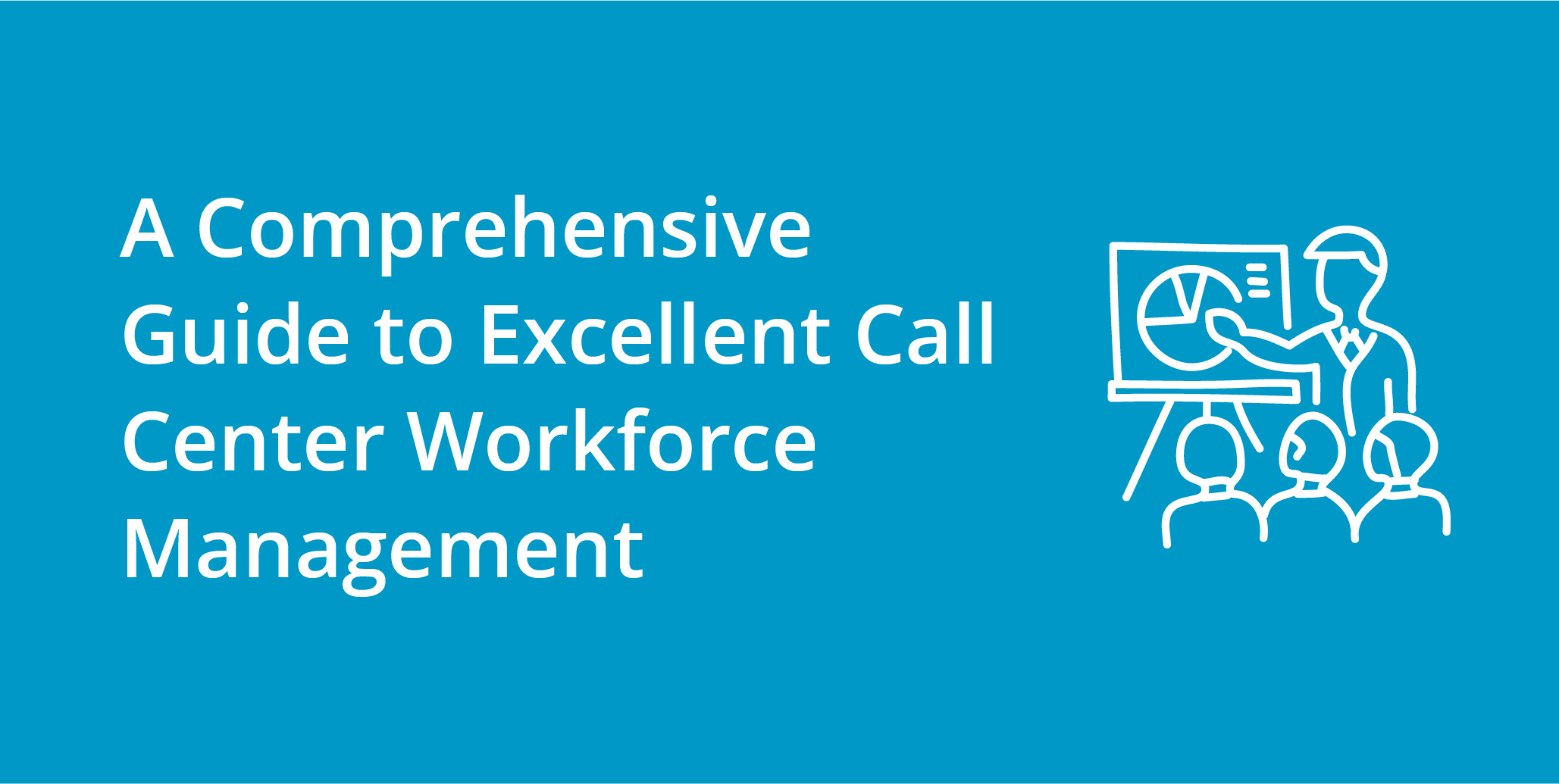What is Workforce Management?
The methods and tools that businesses adopt to maximize staff productivity are referred to as workforce management.
Workforce management is a collection of procedures used in contact centers to guarantee that the appropriate number of agents with the correct call center abilities are scheduled at the right times. This is increasingly more crucial in the wake of Covid-19, as more call center teams adopt long-term remote employment methods.
Your support software may be integrated with call center workforce management software, allowing you to follow a data-driven approach to scheduling and forecasting.
Why Do You Need Workforce Management in the Call Center?
Efficient Employee Scheduling
Employing workforce management solutions frequently results in lower operating expenses, increased customer satisfaction, and a decrease in staff attrition.
Having a complete view of agent scheduling is critical in today’s remote work environment since you can’t just gaze out at the contact center floor. By effectively managing agent schedules, your company will avoid wasting money on over-staffing.
Regardless of whether the agent is in a local office or working remotely, call center managers can choose to alter agent schedules and monitor agent performance using workforce management software to better reach KPIs each day.

Higher Agent Satisfaction
When employees aren’t overworked or stressed out, they are happier. You can make your less experienced contact center workers feel more supported by ensuring that they always have a decent mix of experienced colleagues around them. Lower staff turnover rates are also associated with higher employee productivity, saving you money on hiring and training.
Easily Meet Customer Satisfaction Goals
Regardless of who answers the phone, clients want to be treated with respect and professionalism. If people must wait for support, it produces a bad customer experience for them. Long hold or wait periods are by far the most aggravating component of a bad customer service encounter, according to customer surveys. A company unable to address a problem swiftly is also commonly cited as annoying, closely followed by not having real-time help available 24 hours a day, 7 days a week.
The correct personnel levels during peak periods can be ensured by call centers that use workforce management software, which can have a direct impact.
What are the Main Goals of Call Center Workforce Management?
Forecasting
Forecasting is a big part of workforce management. It’s keeping track of incoming calls over days, weeks, months, or even years. To estimate the workload of the agents, forecasting draws on historical data, research, and intelligence. Volume forecasting is always enhanced if you can recognize trends and patterns in call volume.
But if data must be gathered from every client touchpoint inside the company, including voice, chat, email, the web, SMS, etc., it is easy to see how the sheer volume of data might easily become overwhelming. Unanticipated and new future patterns must also be considered when making a projection, since they may have a bigger influence on results than past data.
The task is virtually impossible if you keep data in a spreadsheet. Instead, call center management software can automate much of this work for you, offering you a call center analytics and reporting dashboard you can use to better predict future call volume.
Scheduling
Achieving labor and financial efficiency depends on properly matching workers to call arrival patterns based on the above predictions. Scheduling entails establishing which shifts and hours will require covering based on the forecast’s requirements. This necessitates having the appropriate personnel on hand.
With better scheduling, service standards are raised, the first-call resolution is improved, and the contact center becomes a less stressful place to work, all of which are crucial for employee retention. Staffing is planned according to call patterns and skill sets.
Again, scheduling isn’t something you should keep in a separate system like a spreadsheet. With the right call center analytics that integrates with your workforce management software, your scheduling will no longer be a headache.

Fair Shifts for Staff
Agents must be allocated to shifts to fulfill the operational requirements specified by the schedule. Because agents are not useful or productive when they are overworked or stressed, a fine balance must be struck.
Many companies assign agents a customized schedule based on their performance, call handling skills, length of service, and other variables. This gives agents motivation to perform better and remain at the company, as they can unlock the shifts they prefer.
To maximize engagement, agent preferences should be included in the scheduling process as much as possible. It’s time-consuming, laborious, and stressful to manually compile and maintain track of all these variables, but not if you use call center shift management software that can take into account these factors.
Adherence
Making sure the center is always adequately staffed is another part of workforce management. Organizations should plan for the unexpected and revise their forecasts frequently to make sure service levels are being reached while making sure the staffing numbers fit the updated forecast. You should be monitoring agents’ performance and timekeeping during each period.
Adherence is a standard metric that states the percentage of time an agent is available to perform their duties during the day. Poor adherence (such as when an agent is required to perform many non-service-related tasks or is frequently late for their shift), is terrible for a call center’s productivity.
Before workforce management systems made it easier to see each individual agent’s adherence statistics, this process was incredibly tedious and time-consuming.
Use all of the Call Center Workforce Management Tools at Your Disposal
Call centers and contact centers have become increasingly complex, with agents handling several channels at once and often doing so from remote or home offices. It’s not realistic to be able to manage such a diverse workforce without software tools designed for the job, and companies that haven’t adapted have been left behind.
By choosing call center software that offers you data you can use in your forecasting and shift management functions based on actual call volumes, your call center performance metrics can soar.



